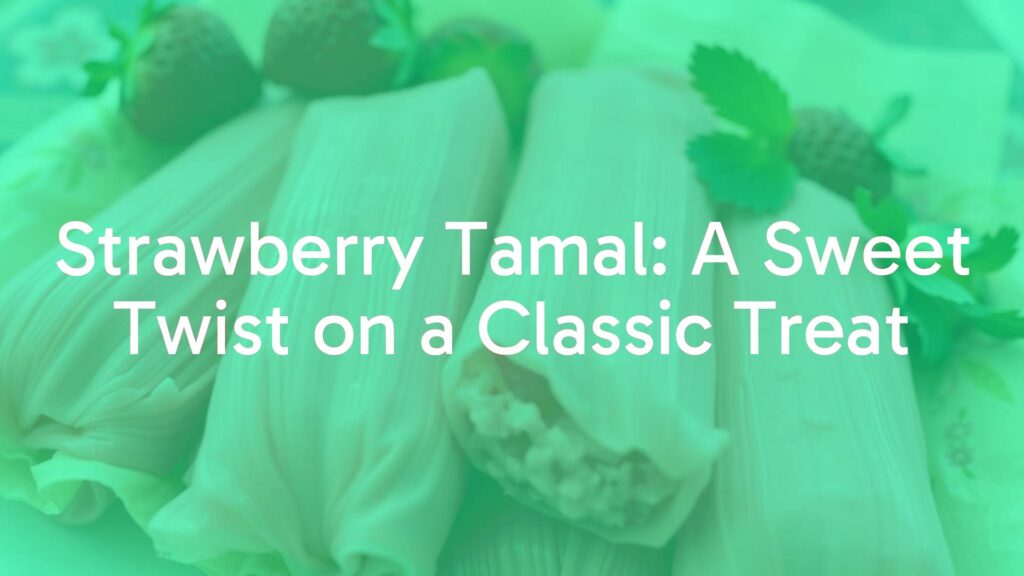Exploring the Strawberry Tamal
Within the vast and flavorful landscape of Mexican cuisine, the strawberry tamal holds a special place as a cherished sweet treat. Unlike the more familiar savory tamales, strawberry tamales showcase the versatility of masa harina by transforming it into a delightful dessert. Their vibrant pink hue and sweet aroma make them instantly recognizable and a favorite at festivals, family gatherings, and street markets.
Origins and Cultural Significance
The tradition of sweet tamales dates back centuries, with pre-Columbian roots that have been lovingly preserved and adapted. While tamales in general have been a staple for Mesoamerican cultures since ancient times, the addition of sugar and fruits such as strawberries reflects later influences from colonization and evolving agricultural practices. During celebrations like Día de la Candelaria or Christmas, sweet tamales, including strawberry, are commonly prepared as a festive complement to savory varieties.
Characteristics and Visual Appeal
Strawberry tamales are known for their soft, moist texture and striking pink color, often achieved through natural or artificial coloring. They are typically wrapped in corn husks, just like their savory counterparts, but their aroma carries the unmistakable scent of strawberries and vanilla. Each bite reveals a delicate balance of sweetness and a subtle corn flavor, with the gentle crumb of the masa lending a comforting, almost cake-like feel.
Key Ingredients and Preparation Approach
The fundamental ingredient in strawberry tamales is masa harina, a specially treated corn flour. The dough is enriched with sugar, butter or lard, a touch of baking powder for lightness, and flavored with vanilla and strawberry essence or puree. Chopped fresh strawberries may also be incorporated for added texture and bursts of real fruit flavor. The mixture is tinted pink before being carefully spread on softened corn husks, wrapped, and then steamed until light and fluffy.
Variations and Regional Differences
While the classic strawberry tamal maintains its signature flavor, creative cooks often experiment with extras. Some versions include a creamy filling, such as sweetened cream cheese, to create contrast. Others may top finished tamales with a drizzle of condensed milk or sprinkle them with grated coconut for even more indulgence. In certain regions, you might find tamales made with guava, pineapple, or other fruits, expanding the spectrum of sweet tamales beyond strawberry alone.
Serving Suggestions and Flavor Pairings
Strawberry tamales are best enjoyed warm, fresh out of the steamer. Their mild sweetness is complemented by beverages like Mexican hot chocolate, atole, or cinnamon-spiced coffee. They also pair well with creamy desserts, such as flan or arroz con leche, for a pleasing contrast of textures. For a lighter touch, pair strawberry tamales with fresh fruit or serve them alongside a dollop of whipped cream.
Ingredient Substitutions and Dietary Adaptations
While traditional recipes may call for butter or lard, non-dairy spreads or coconut oil can be substituted to make vegan-friendly versions. Lactose-free milk and alternative sweeteners can also be used without sacrificing flavor or texture. If strawberries are out of season, using high-quality strawberry preserves or frozen berries can provide a similar taste experience.
Conclusion
The strawberry tamal represents the playful, inventive side of Mexican culinary tradition—a testament to the endless possibilities of masa. Whether enjoyed at a family table or sold by street vendors during local festivities, these rosy-hued treats continue to delight palates with their delightful sweetness and rich heritage.

